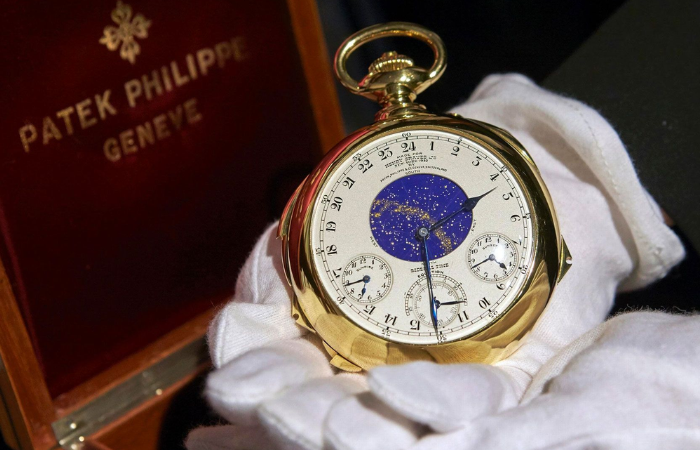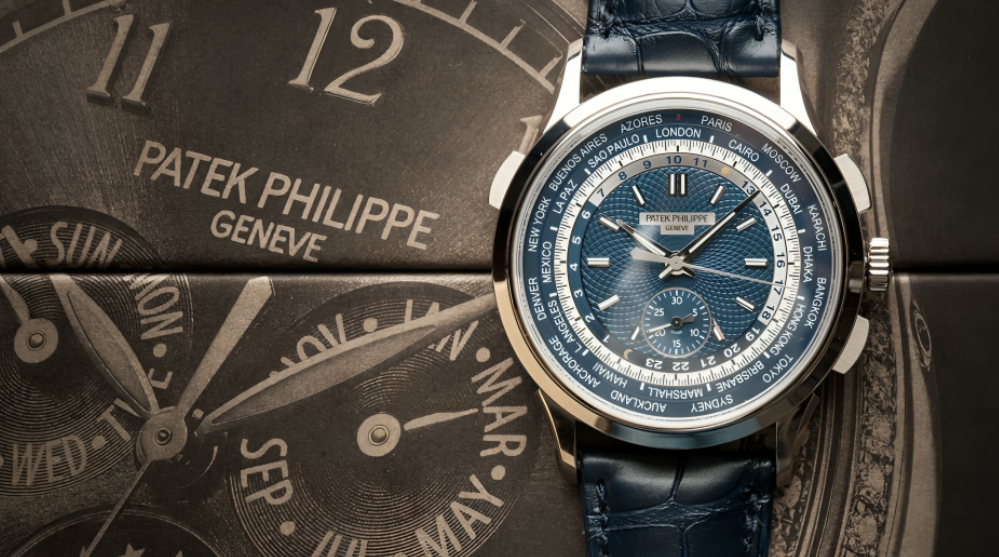Few brands command as much respect and mystique in the luxury watch world as Patek Philippe. This Swiss watchmaker, founded in 1839, is a master of impeccable craftsmanship, exclusivity, and timeless elegance. But why do Patek Philippe watches rank among the most expensive in the world, selling for six or seven figures, when so many other high-end timepieces also do?
Why Is Patek Philippe So Expensive? In this article, we will explore the top five reasons why Patek Philippe watches command such a high price. From their prestigious heritage to the meticulous process of crafting with the finest materials, we will explain why Patek Philippe has become one of the most desired watch brands in the world.
Legacy and Heritage of Patek Philippe: A Brand Oozing History
This is the story of Patek Philippe, starting in 1839, when the Polish watchmaker Antoine Norbert de Patek found his ideal partner in the French horologist Adrien Philippe. Their dream was clear and revolutionary at the same time—to create a watch that would not only show time but also embody mechanical innovation and aesthetic beauty. Founded in this way, it became one of the leading luxury watch brands and has remained so until today, creating high-end timepieces that blend tradition and modern technology.

The Founders' Dream and the Rise of Perfection
The co-founder and inventor of the keyless winding mechanism, Adrien Philippe, laid the foundation for many of the accomplishments that we now consider standard in horology. The company advanced this legacy with early innovations, creating complex complications that continued to redefine what was possible from a mechanical watch.
Family Tradition and Independence
What distinguishes Patek Philippe is primarily the fact that it has always been a family-owned business. It was sold to the Stern family in 1932, and to this day, it remains in their hands. This independence, at a time when most luxury brands were being taken over by large conglomerates, is unmatched. Being in private hands allows Patek Philippe to focus more on quality than quantity, investing in long-term innovation rather than short-term profits.
Collectibility and Historical Significance

The historical significance of Patek Philippe watches raises their value to an entirely different level. Certain designs are considered collector’s items, and several historic timepieces have fetched record prices at auctions. For example, in 2014, the Patek Philippe Henry Graves Supercomplication sold for $24 million. Sales like this cement the brand’s place in history, and owning one of its watches could be a sound investment.
Unmatched Knowledge
Hand-assembled Movements and Precision
Every Patek Philippe watch is a lesson in craftsmanship. Unlike series-produced watches that rely on automated production, every watch from Patek Philippe is assembled by master horologists. The intricate movements, comprising literally hundreds of tiny, laboriously manufactured parts, ensure that every watch works with extreme precision.
Intense Production
It’s not uncommon for Patek Philippe watches to spend more than 9 months or even up to 2 years in production—the hours entailed in hand-finishing every detail, from the movement to the case and the dial. This attention to perfection makes each piece of time a unique masterpiece, justifying its high price tag.

The Relevance of Artisan Knowledge
Patek Philippe employs the best artisans in the world, masters of delicate techniques such as enameling, engraving, and gem-setting. Their mastery contributes to a timepiece that is not only perfect in its performance but also a feast for the eyes. Techniques such as guilloché engraving and hand-painted enamel dials are very involved and make the watches even more exclusive.
The Seal of Quality: Patek Philippe Seal and Geneva Seal
Among the few watches bearing the prestigious Geneva Seal are indeed Patek Philippe watches. It is a hallmark of excellent watchmaking quality. In 2009, it released its proprietary Patek Philippe Seal—a warranty of excellence in craftsmanship, precision, and durability—providing a further reason for prices that are so high.
Innovation and Technological Advancement
Pioneering Mechanisms and Complications
Among other things, Patek Philippe is known for its horological innovations. Most of their watches boast complicated mechanisms, better known as complications, in addition to the standard mechanisms that show the time of day. They include the perpetual calendar, chronograph, tourbillon, and minute repeater. It takes much greater skill and time to make complicated watches than regular watches, and Patek Philippe represents the apex in that respect.

For instance, the Patek Philippe Caliber 89, built in 1989, was titled the most complicated watch in the world and holds 33 complications. The complexity of such watches requires not only advanced machinery but also great human expertise, which makes these watches tremendously costly.
The Role of Research & Development
Behind every novelty, there is serious research and development. Patek Philippe invests millions in R&D to maintain its edge in horology. This can involve perfecting the mechanical efficiency of movements or pioneering new and more durable materials. The quality and outstanding performance of its watches are direct results of the R&D input.
In-House Production of Parts
Patek Philippe produces nearly all the components in its watches in-house. This level of vertical integration alone gives full quality control—from materials to craftsmanship—down to the tiniest screw and the case. Almost everything is made within their facility, adding yet another layer of exclusivity.
The Mastery of Complicated Watches: Tourbillons, Minute Repeaters, and More
The mastery of the most complicated and rarest watch complications in horology includes tourbillons and minute repeaters. Whether to increase precision or chime the time, these mechanisms are intricate pieces that take hundreds of hours to perfect. The inclusion of such mechanisms in some Patek Philippe models serves as a testament to the brand’s technical excellence.
Exclusivity and Scarcity
Limited Annual Production
Patek Philippe is known for keeping its production numbers low. Producing only about 60,000 watches each year, while other luxury brands produce hundreds of thousands, automatically turns each Patek Philippe into a rare commodity. This alone adds significantly to the value. In fact, that is why highly sought-after Patek Philippe models such as the Nautilus or Aquanaut can take years to deliver.

Why Rarity Adds to the Value
With luxury goods, scarcity equals desirability. The fewer watches produced, the higher their value in both the primary and secondary markets. A limited supply combined with high demand ensures these watches retain or even appreciate in value over time.
The Waiting List Phenomenon
Demand far outstrips supply for some of the most sought-after models, like the Nautilus 5711. Retail buyers wanting to buy one may wait several years. Such a waitlist heightens the desirability and exclusivity of the brand.
Ownership as a Status Symbol
A Patek Philippe is not just a watch, but a status symbol denoting success and sophistication. Owning one is, for many, the pinnacle of professional and personal attainment. It’s this status symbol element that drives up the price.
The Finest Materials Used
Metals of the Highest Class and Precious Stones
Patek Philippe watches make use of nothing but the best available materials. From the cases made of platinum and 18k gold to the handpicked diamonds and other gemstones, only the highest quality goes into each watch. It is the accuracy of incorporating these materials into each timepiece that adds immense value to the final product.

Use of Exclusive and Rare Materials
Patek Philippe usually uses very rare and exclusive dials, often made from enamel, mother-of-pearl, or even cloisonné. These factors further enhance their aesthetic beauty, in addition to being contributory reasons for strength and rarity, which make every watch a work of art.
Resistant Longevity
Patek Philippe watches outlive generations. The popular slogan from the brand goes this way: “You never actually own a Patek Philippe. You merely look after it for the next generation,” and this more or less describes the unbelievable durability and timeless appeal their watches boast. A well-maintained Patek Philippe watch can last for centuries, further justifying the high price tag.
Attention to Detail: Finishing Touches That Matter
A timepiece by Patek Philippe has an immaculate finish. From the polishing of the case to the beveling of the movement’s constituent parts, each little detail shows refinement to perfection. Such subtleties in finish may be minor, but each is very relevant to quality and beauty overall and necessitates the hand of a skillful craftsman.
The Power of Brand Reputation
Unmatched Prestige Among Watchmakers
To many, Patek Philippe is the finest watchmaker in the world. It has remained in the top league of horology for almost two centuries through the release of quality timepieces that have embraced innovation. Owning a Patek Philippe means one has bought into a brand steeped in history and legacy, which few other horologists can match.
Celebrity Endorsements and Popularity

From royalty to Hollywood A-listers, the most influential and high-profile people in the world are part of the clientele at Patek Philippe. Celebrities like Brad Pitt and Ellen DeGeneres are seen time and again donning Patek Philippe watches to help associate the brand with luxury and success.
Why Brand Image Drives Prices Up
Patek Philippe has managed to create an image of exclusivity, sophistication, and timeless luxury. This brand image itself loudly speaks for the high prices. A person buying a Patek Philippe timepiece is not just buying any watch; he or she is buying tradition, prestige, and craftsmanship.
Worth of Investment
Investment Potential of Patek Philippe
Patek Philippe would easily be an investor’s delight concerning watches. Many of the watchmaker’s limited and vintage editions have been greatly appreciated over the years. There are watches that, having been bought decades ago, can sell for many times their original price today.
Record-Breaking Auction Sales

Patek Philippe watches have gained a habit of breaking records at auctions, often selling for millions. For example, it was expected that the Patek Philippe Grandmaster Chime would sell at auction in 2019 for $31 million, thus becoming the most expensive watch in the world—an indication of their popularity among both collectors and investors in equal measure.
How Vintage Models Appreciate Over Time
Owning a vintage Patek Philippe is like owning a piece of horological history. Most models, especially those with uncommon complications or unique designs, are likely to appreciate due to their rarity and collectibility, thus turning them into not only a luxury purchase but also a possible long-term investment.
Few brands in haute horlogerie come close to matching the prestige, craftsmanship, and exclusivity of Patek Philippe. More precisely, this stems from the rich history of the brand, peerless craftsmanship, continuous innovation, and the use of the finest materials. A Patek Philippe watch is far beyond a timepiece; be it an investment, a status symbol, or even a masterpiece of horological art—it’s a legacy.



